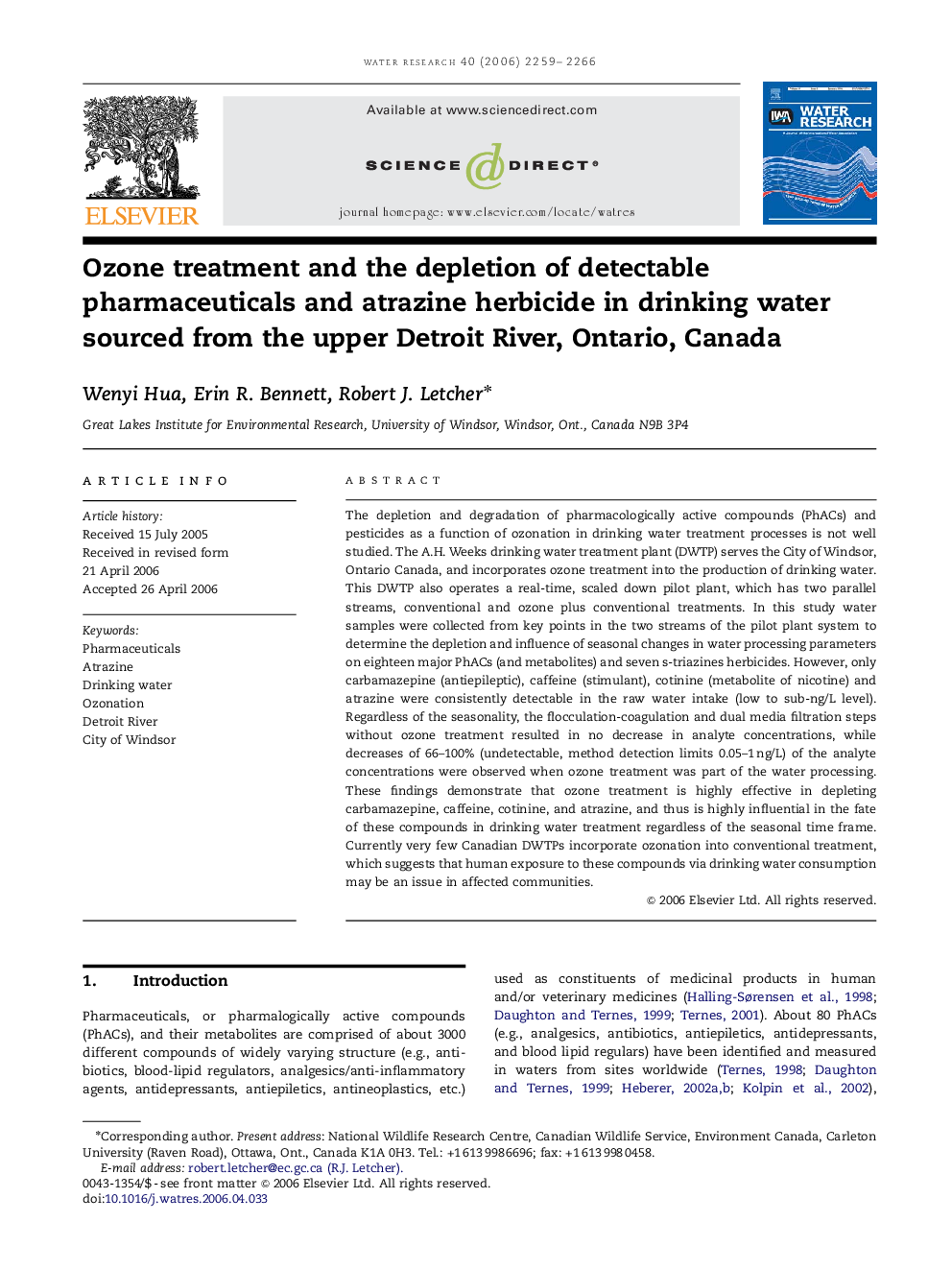| کد مقاله | کد نشریه | سال انتشار | مقاله انگلیسی | نسخه تمام متن |
|---|---|---|---|---|
| 4487183 | 1317018 | 2006 | 8 صفحه PDF | دانلود رایگان |

The depletion and degradation of pharmacologically active compounds (PhACs) and pesticides as a function of ozonation in drinking water treatment processes is not well studied. The A.H. Weeks drinking water treatment plant (DWTP) serves the City of Windsor, Ontario Canada, and incorporates ozone treatment into the production of drinking water. This DWTP also operates a real-time, scaled down pilot plant, which has two parallel streams, conventional and ozone plus conventional treatments. In this study water samples were collected from key points in the two streams of the pilot plant system to determine the depletion and influence of seasonal changes in water processing parameters on eighteen major PhACs (and metabolites) and seven s-triazines herbicides. However, only carbamazepine (antiepileptic), caffeine (stimulant), cotinine (metabolite of nicotine) and atrazine were consistently detectable in the raw water intake (low to sub-ng/L level). Regardless of the seasonality, the flocculation-coagulation and dual media filtration steps without ozone treatment resulted in no decrease in analyte concentrations, while decreases of 66–100% (undetectable, method detection limits 0.05–1 ng/L) of the analyte concentrations were observed when ozone treatment was part of the water processing. These findings demonstrate that ozone treatment is highly effective in depleting carbamazepine, caffeine, cotinine, and atrazine, and thus is highly influential in the fate of these compounds in drinking water treatment regardless of the seasonal time frame. Currently very few Canadian DWTPs incorporate ozonation into conventional treatment, which suggests that human exposure to these compounds via drinking water consumption may be an issue in affected communities.
Journal: Water Research - Volume 40, Issue 12, July 2006, Pages 2259–2266